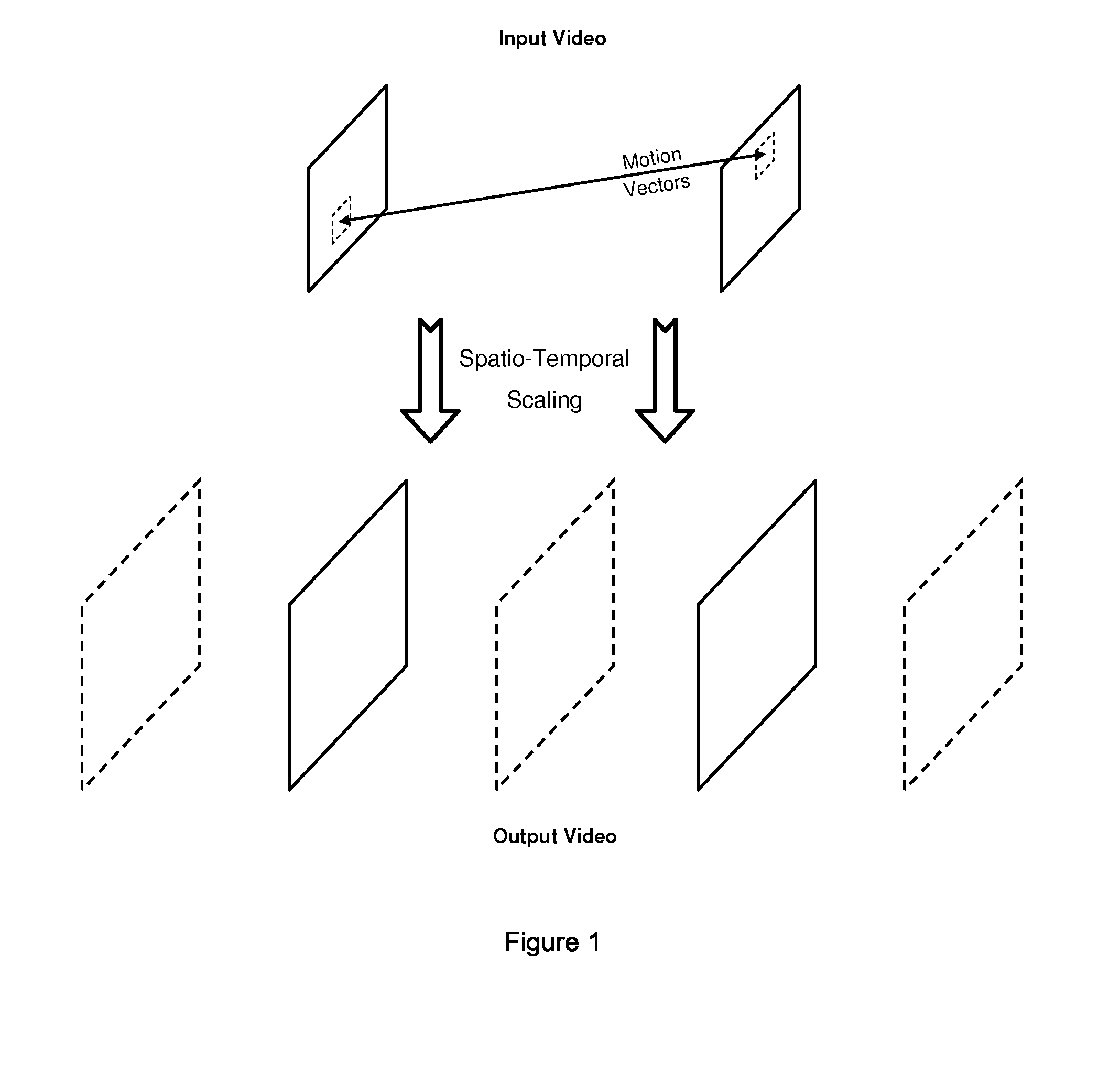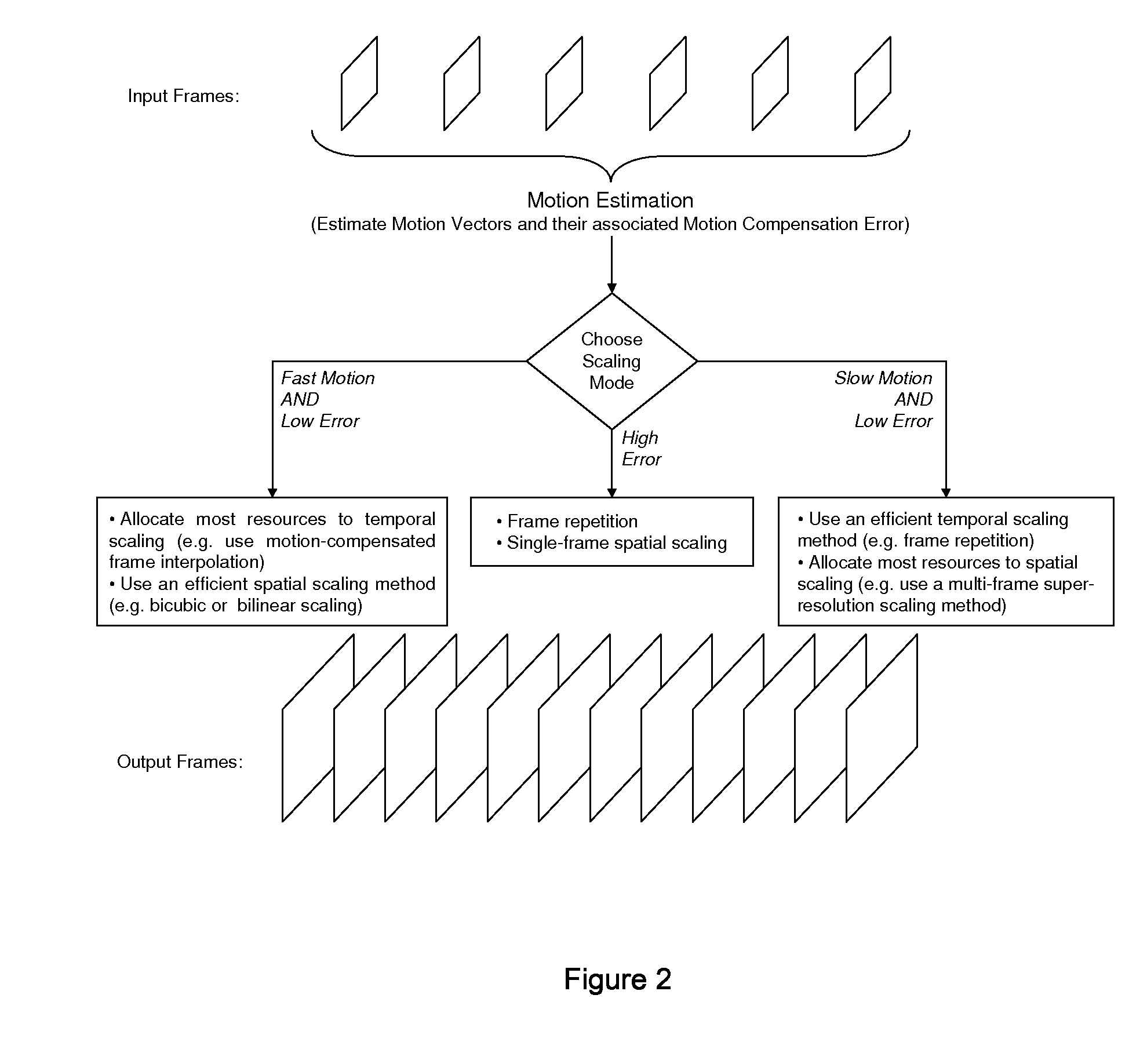Efficient spatio-temporal video up-scaling
- Summary
- Abstract
- Description
- Claims
- Application Information
AI Technical Summary
Benefits of technology
Problems solved by technology
Method used
Image
Examples
Embodiment Construction
[0051]The present invention provides a method to enable high-quality spatio-temporal scaling in a computationally efficient manner. For a given set of spatial and temporal scaling factors, the objective is to choose a spatio-temporal scaling method that maximises the perceptual image quality, while not exceeding the available computational resources.
[0052]Spatio-temporal up-scaling involves increasing both the spatial and temporal resolution of video. For digital images, this amounts to increasing the number of samples (pixels) in each frame, and also increasing the number of frames per second. FIG. 1 provides a basic illustration of the spatio-temporal up-scaling process. Increasing the spatial resolution helps to provide a sharper, more detailed picture; and increasing the temporal resolution allows for motion to be represented more smoothly.
[0053]Motion estimation is often used when performing temporal scaling. In order to generate new frames between existing ones, it is necessar...
PUM
 Login to View More
Login to View More Abstract
Description
Claims
Application Information
 Login to View More
Login to View More - R&D
- Intellectual Property
- Life Sciences
- Materials
- Tech Scout
- Unparalleled Data Quality
- Higher Quality Content
- 60% Fewer Hallucinations
Browse by: Latest US Patents, China's latest patents, Technical Efficacy Thesaurus, Application Domain, Technology Topic, Popular Technical Reports.
© 2025 PatSnap. All rights reserved.Legal|Privacy policy|Modern Slavery Act Transparency Statement|Sitemap|About US| Contact US: help@patsnap.com



